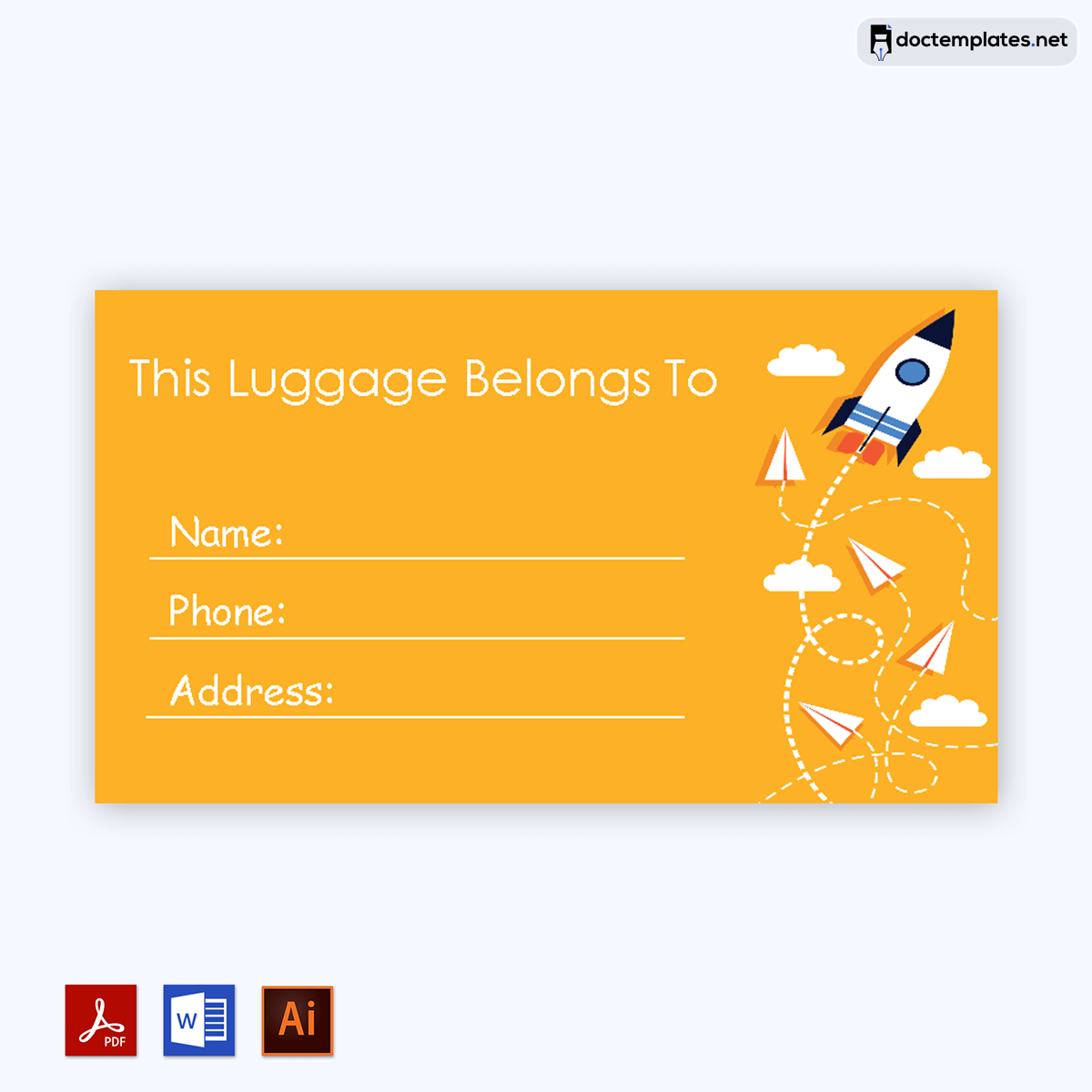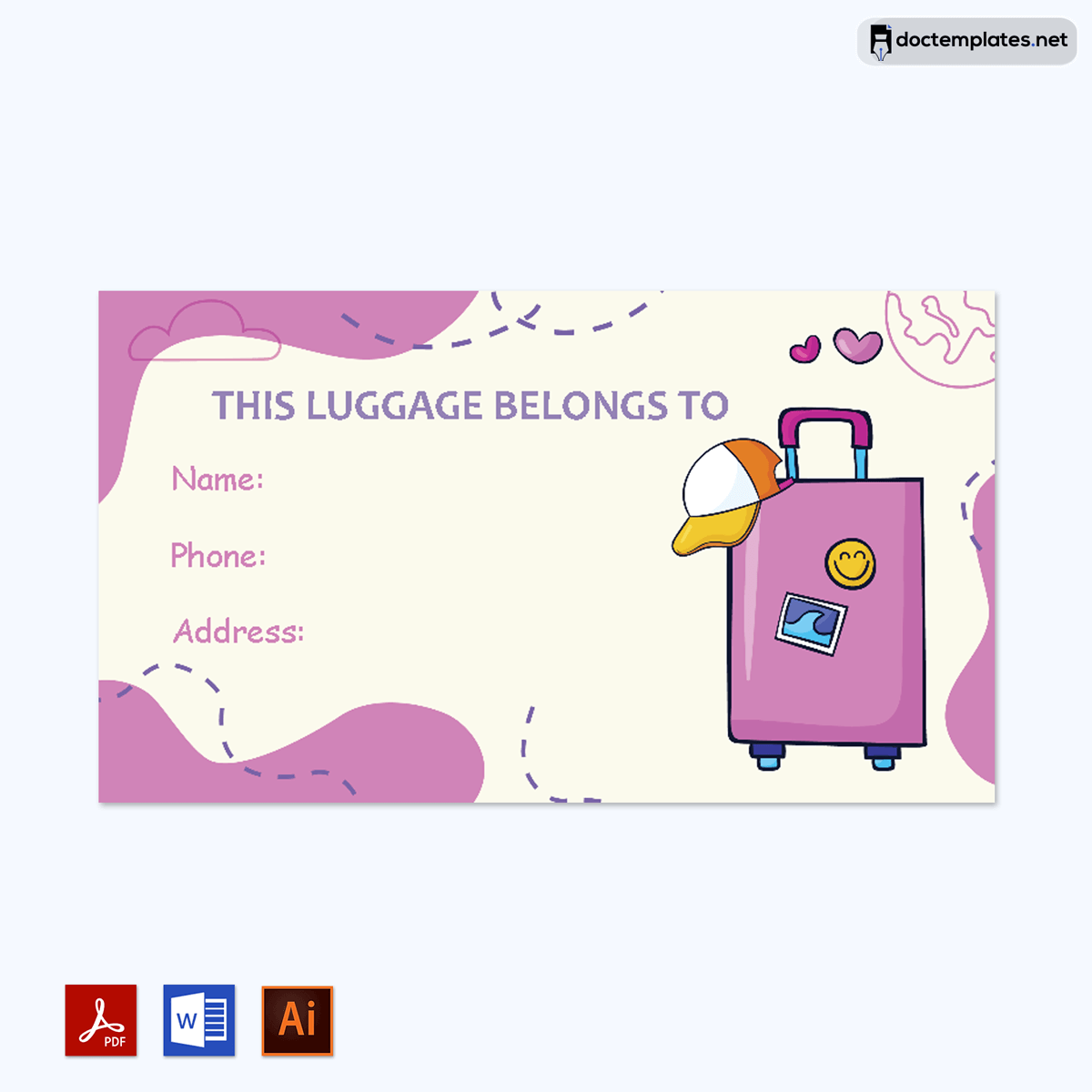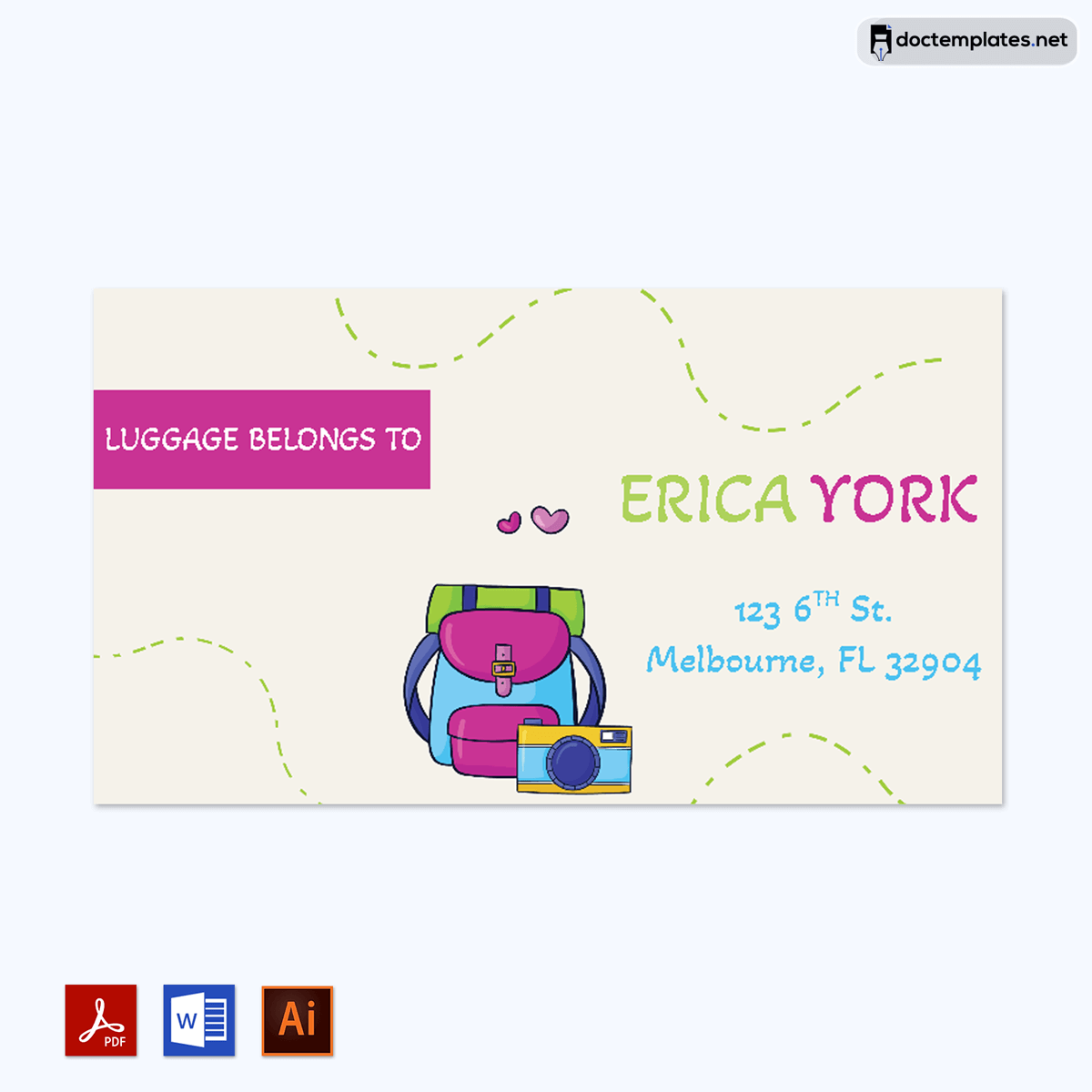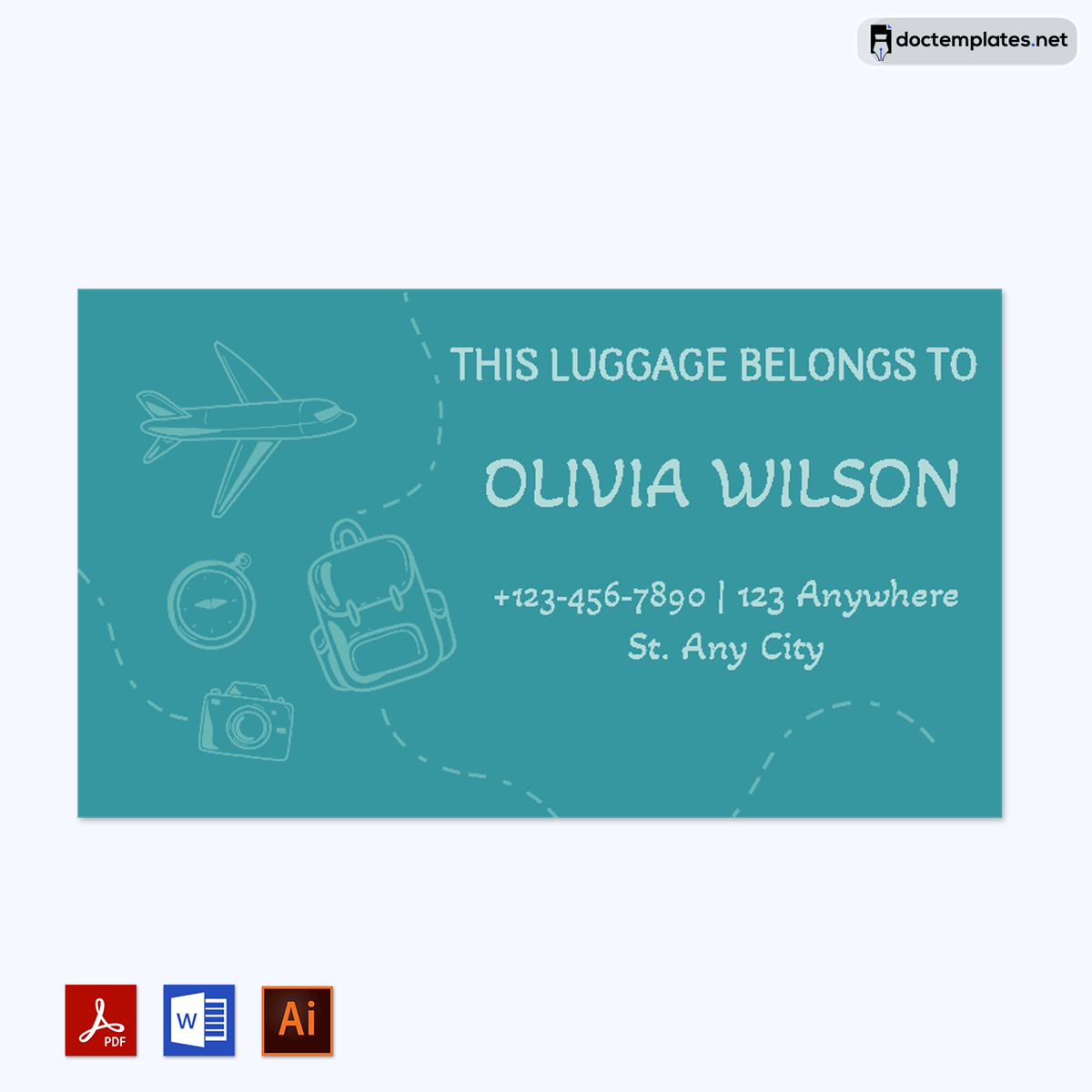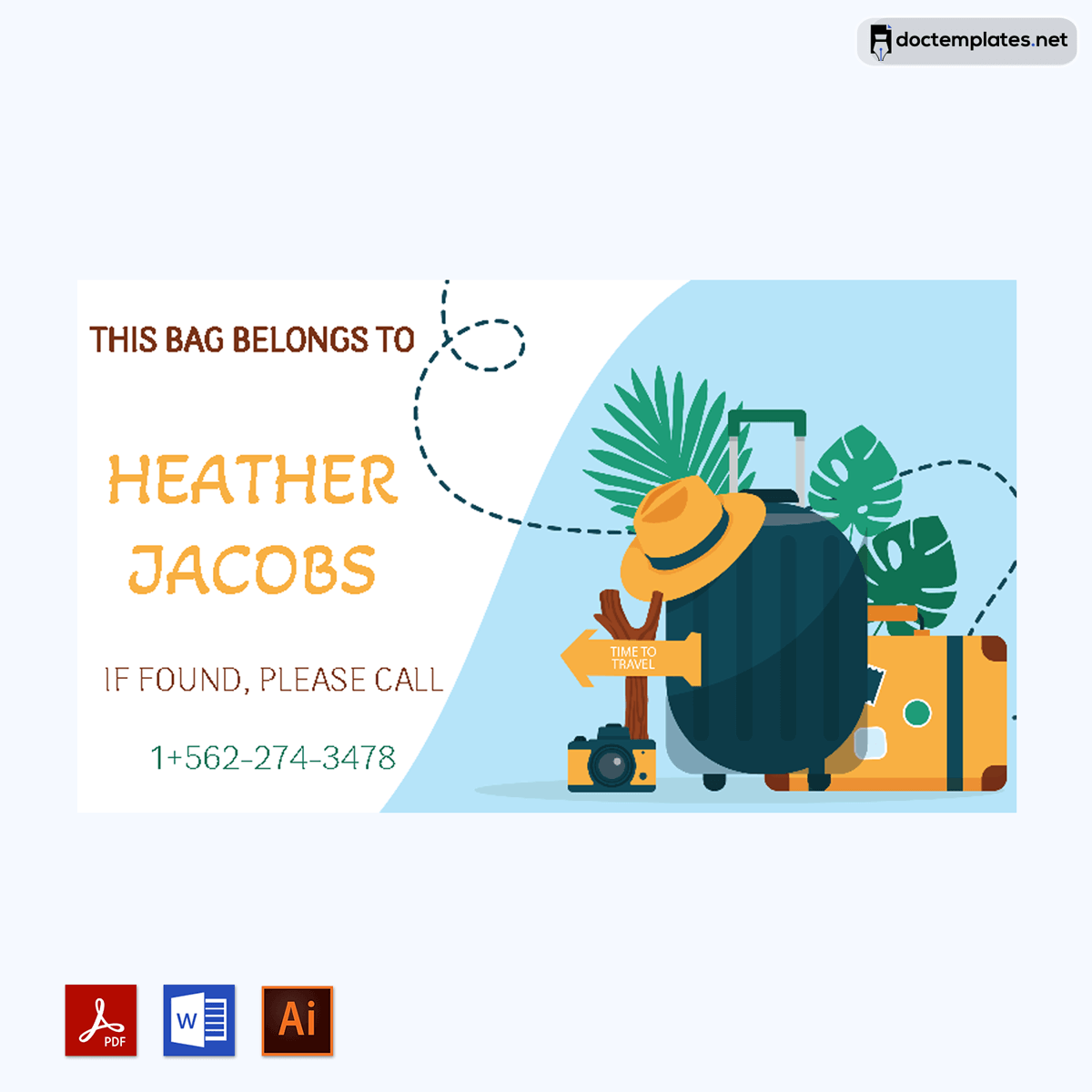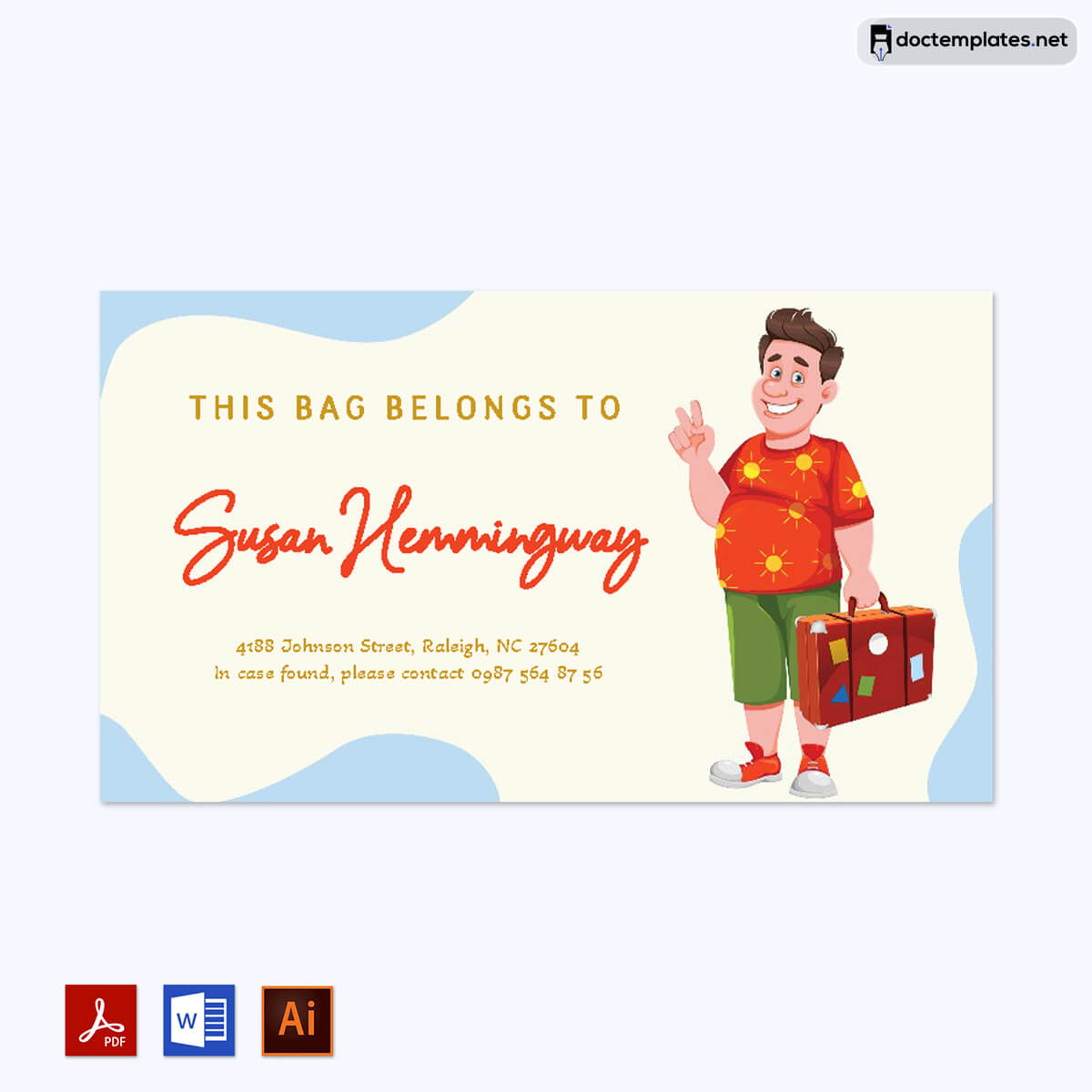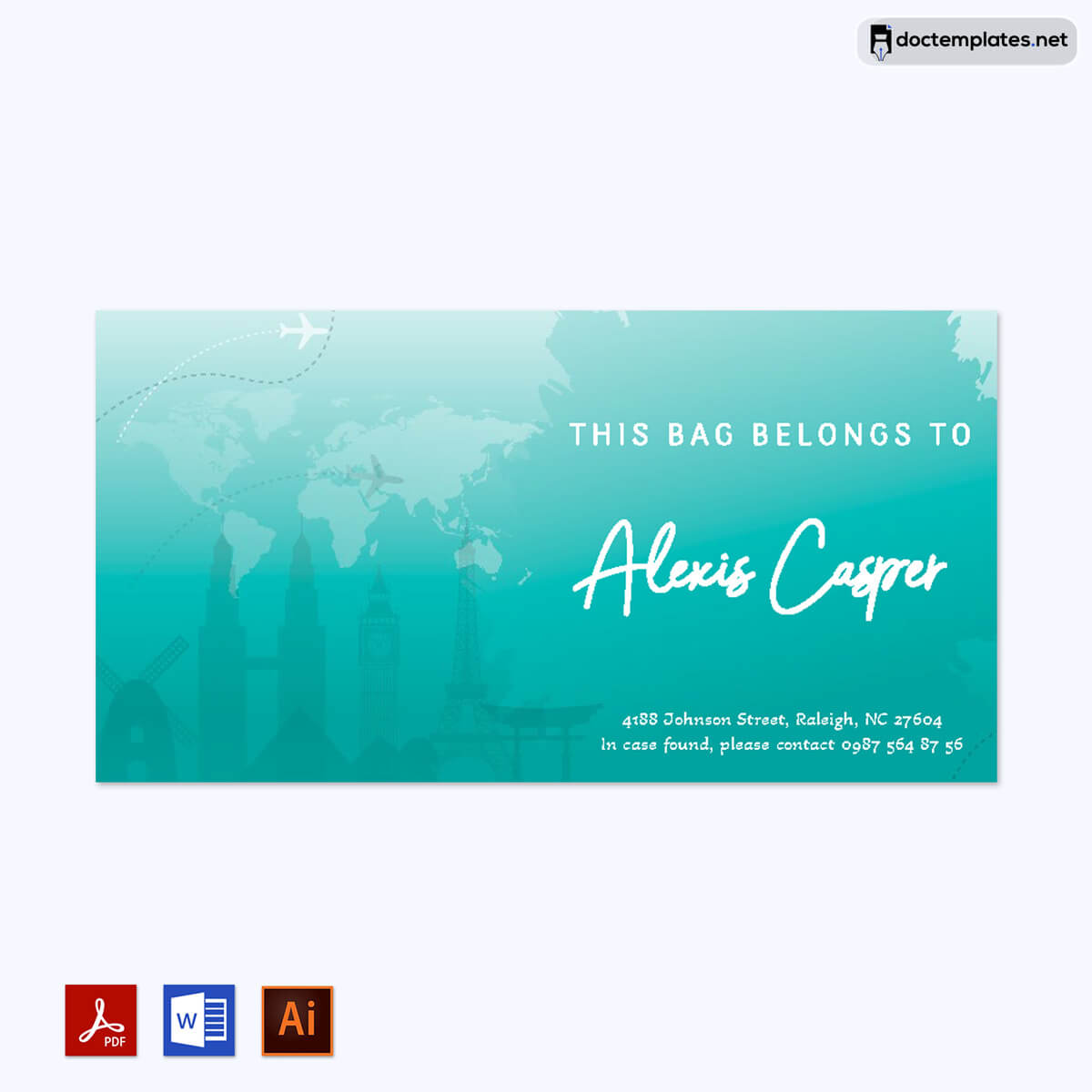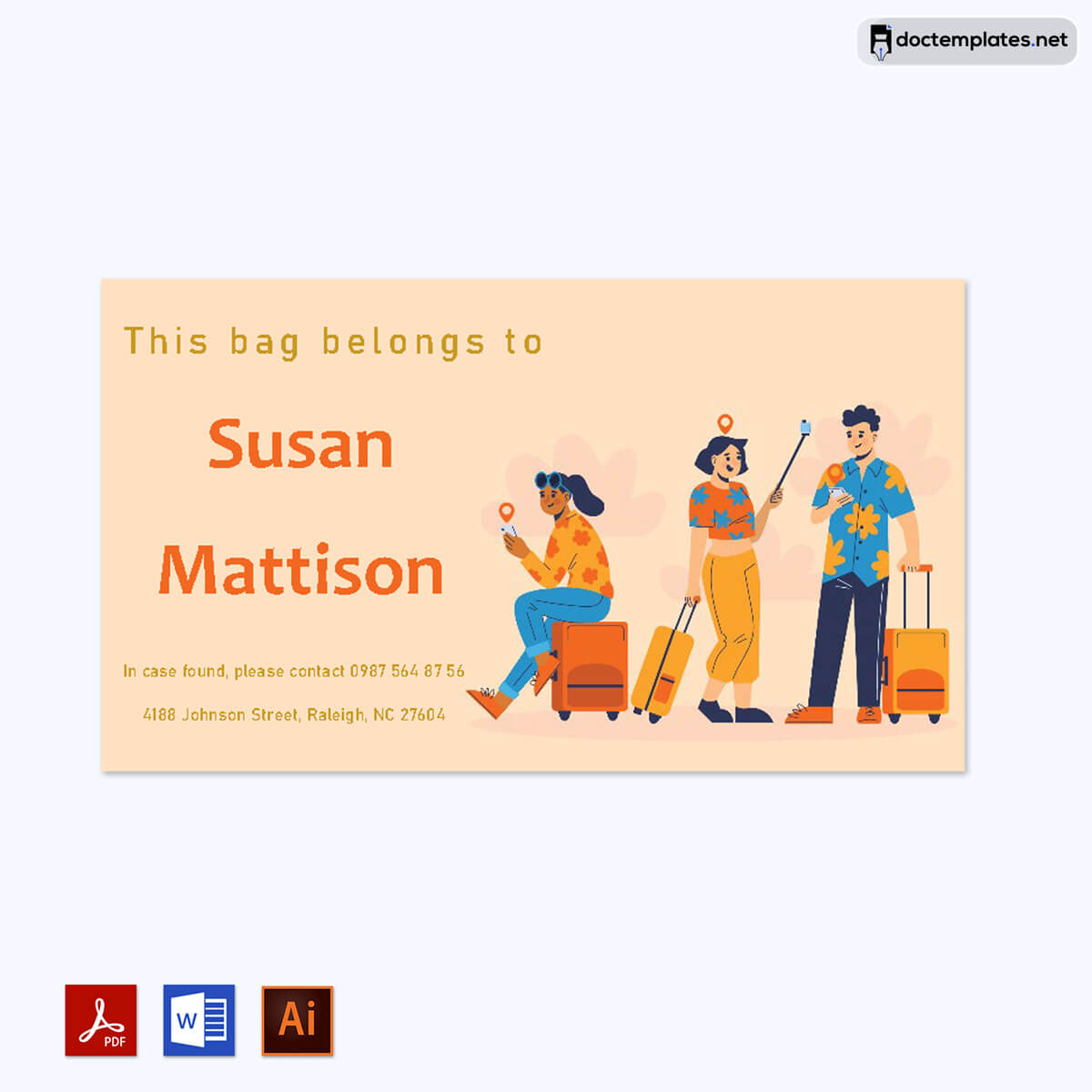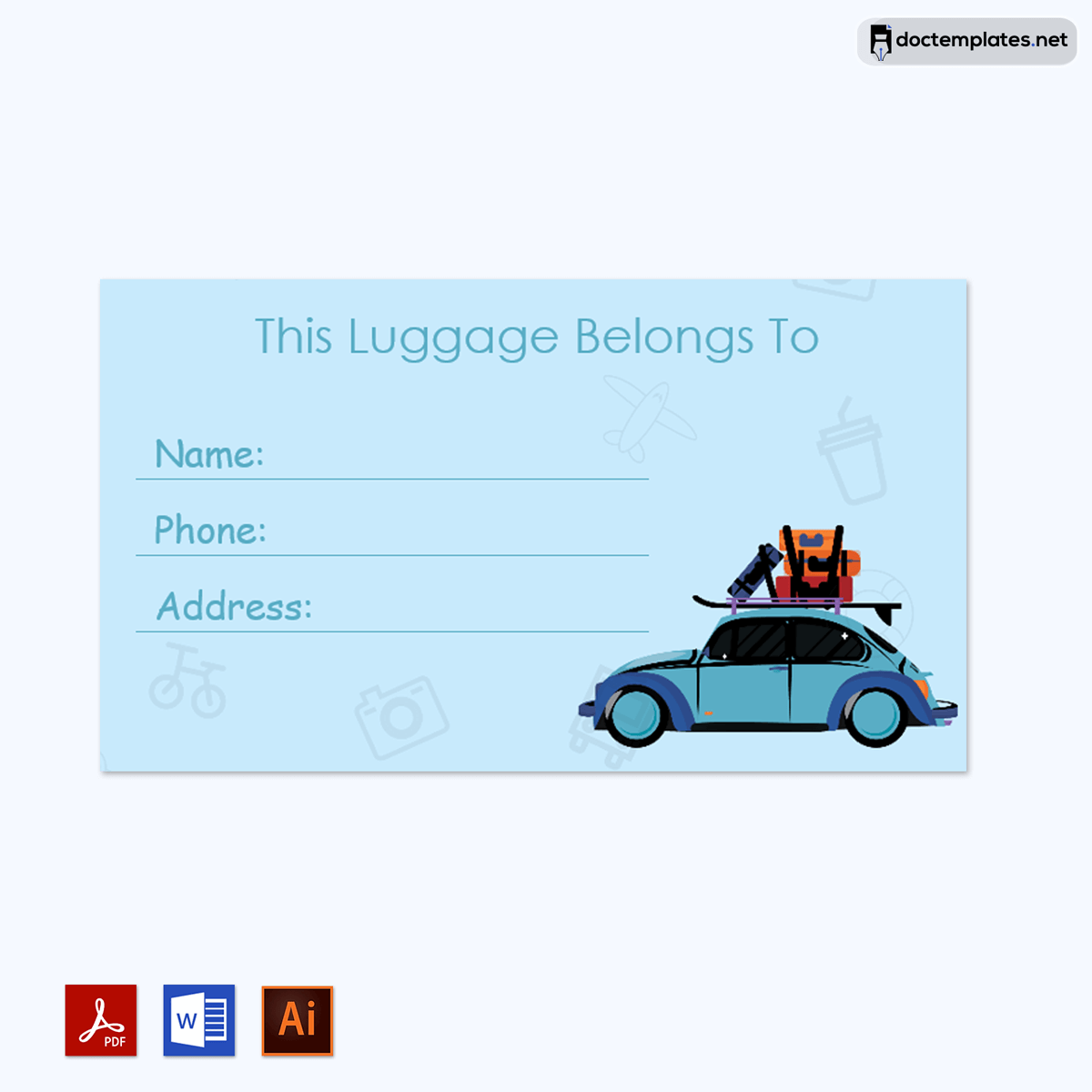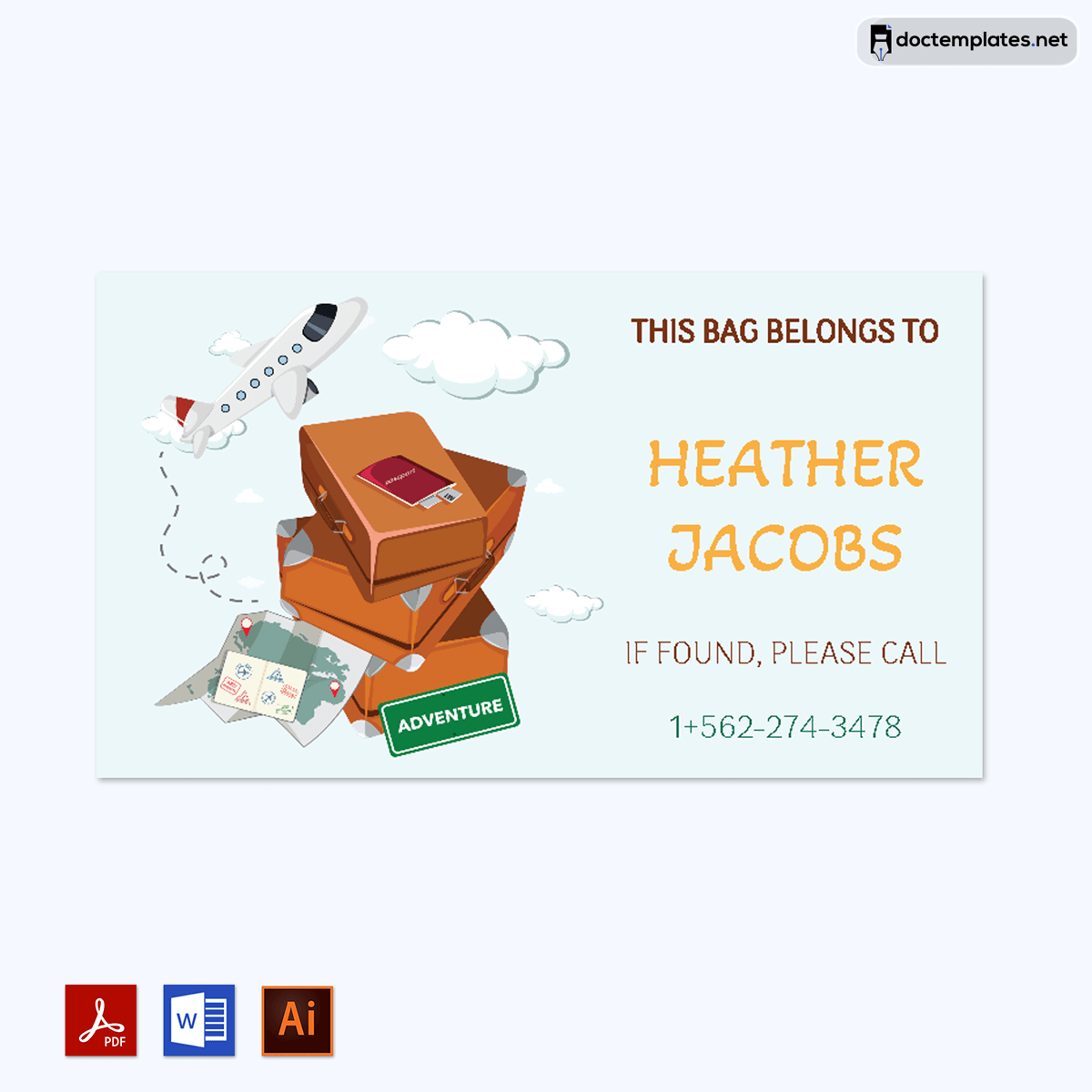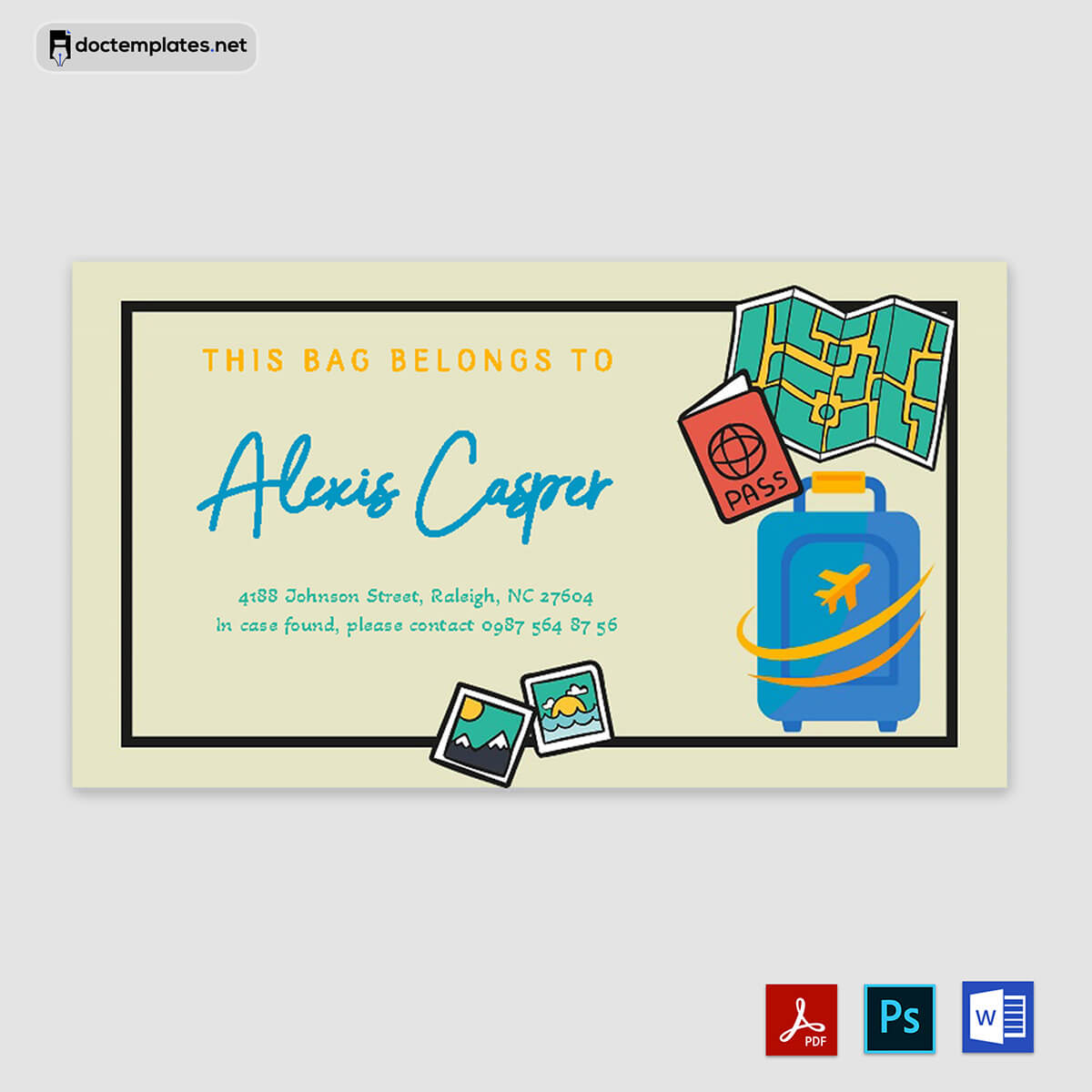In 1882, the first luggage tag with separate vouchers, i.e., one for the traveler and one for the luggage, was patented by John Michael Lyons long before airplanes were invented. These were referred to as “baggage checks.” Travelers used these vouchers to identify their luggage on ships, trains, ferries, and buses. The idea was to aid travelers in identifying their bags. With the separate voucher, it was simple to establish whose luggage belonged to whom, avoiding disputes at the destination.
By 1930, the Warsaw Convention had proposed outlines for issuing luggage tags. Among other things, the guidelines set rules for documents to be used to carry it, the carrier’s liability, and set a legal precedent for lost luggage. It also mandated carriers to issue baggage checks for checked luggage, limiting the carrier’s liability. These outlines contributed to the standardization of luggage tags for all ratifying nations. Furthermore, this standardization highlighted the traveler’s obligation in the event of damage or loss of luggage.
Since the travel industry has evolved, the principle of luggage tags has remained the same. It is now a critical logistical tool in the rapidly expanding world of travel and aviation. All of the details on a baggage tag guarantee that each luggage item arrives at its proper destination. It is durable enough to withstand travel and unique enough to be easily identifiable.
This article will outline the importance of a luggage tag and discuss the components to be included in a template and some considerations for using it.
Making and Printing Luggage Tags at Home
It is possible to make personalized and elegant tags at home. Firstly, creating a template via a suitable word processing platform such as MS Word or Excel is advisable. You can incorporate different elements, such as name, destination, origin, address, etc., that suit your travel needs. This way, you can customize your tags to match the type of trip you are undertaking. You can also use customizable pre-built documents from online platforms to make DIY luggage tags at home. They are advantageous because they are reusable. Once you have crafted and filled it out, you can print it using your home printer.
Luggage Tag Templates
Traveling can be hectic, from booking to getting to the terminal on time. By using our downloadable templates for luggage tags, your journey becomes simpler. Since most of the details have already been filled out, using them saves you time so you can deal with other aspects of your journey. They make it simple to develop a unique design that includes images and phone numbers while still sticking out on the luggage carousel.
These downloadable documents can easily be edited to fit your requirements:
What are Luggage Tags?
You are given a tag when you check in your luggage at an airport or train station. It contains your information and is essential since it helps trace luggage items back to you. Therefore, even after arriving at the destination, you should retain your tag in the event of future claims.
Tags are available in various designs, from garish plastic to exquisite Italian leather accessories with elegant and customized embossing. They all have a clear cover on one side to indicate the inner contact card while preserving it from the environment. Luggage tags are typically attached to the side or retractable handle of suitcases. Other suitcases have a built-in transparent pouch to place a tag. The tag is wrapped around the straps of duffle bags and backpacks.
You are encouraged to get tags for both carry-on and checked luggage. You should attach one to carry-on luggage as it may be stowed away. For checked luggage, you should place it on and in the bag, in case the outside one gets damaged.
Stats: On average, travelers spend an astonishing $31 billion annually on luggage, and thanks to tags, only 3% of this luggage is lost or stolen. Having luggage tags can therefore save you money.
Do you know? Because of tags, about 97% of all lost luggage is located and returned to its owners within a record period of two days.
6 Reasons To Use Luggage Tag
A luggage tag serves various purposes when claiming it and in case of loss or theft. Airports, bus stations, and train terminals attach state-of-the-art barcode strips called bag tags on luggage, which barcode scanners can identify at the destination. While only the carrier can scan it, anyone who can read English can read a luggage tag.
The following are the reasons you should have a tag on your luggage:
Easy to spot
A tag makes it simple to spot your luggage, especially if it is identical to another traveler’s design. Mistaking your luggage for someone else’s is easy unless you have a distinctive or instantly recognizable suitcase or bag. A tag allows you to identify your belongings and minimizes the potential of a stranger accidentally taking off with them.
Statistical Insight: Bus terminals, train stations, and airports become congested during peak travel seasons. Because of the enormous travel volume, six bags or suitcases are lost or stolen for every 1000, and less than half of all luggage is delivered to its bearer. Using tags makes it easy to identify your luggage and dissuades thieves from stealing your bags and suitcases.
Showcase durability
Luggage tags have been around for a long time. They can tolerate any travel or environmental conditions and baggage handling processes. A tag on a bag or suitcase indicates that the luggage was durable during the journey.
It is unique in style
Luggage tags are also a unique item that assists you in quickly identifying your bags. The finest ones have personalized embossing, allowing you to customize your aesthetic. Those made of leather or metal add an exquisite touch to your bag or suitcase. Monogrammed luggage tags that are hand-lettered or foil-stamped are a great complement to a suitcase or travel bag.
Prevents luggage loss and theft
There is an excellent chance of luggage being lost when handled by baggage claim. Over 30 million bags and suitcases are lost annually at airports, train terminals, and bus stations. The presence of a luggage tag prompts baggage handlers and airport staff to be more careful while handling travel bags.
Luggage tags can lessen the likelihood of your bags being stolen. This is because thieves prefer to steal bags without identification, so they may claim they chose the wrong one. A case like this is frequently seen with a smaller suitcase or bag that does not have a tag.
Helps track your luggage
Being able to track your luggage during travel is essential. Since a tag has your information, tracing lost suitcases back to you is easy. In addition, some have Radio Frequency Identification (RFID) chips that are trackable by smartphones. The information on tags enables airport staff to contact you in case of loss or theft if the luggage is found.
They also allow your carrier to trace and locate specific luggage that has gone missing and was not received at the destination.
It is a great travel accessory
Luggage tags may also be used as a colorful adornment for your bags or suitcase. They are usually available in various colors and designs. However, a primary tag will not be enough for the refined, style-conscious traveler. Because leather is more durable, sleeker, and more beautiful than any other material, this tag is becoming increasingly popular.
Information to Include in Template for Luggage Tag
The luggage tag includes detailed information, making it easier for airport staff to trace the luggage back to the owner. To create effective tags, you should use a befitting template. They are essential tools to guide what information to include in your tags. Also, they speed up the process of creating luggage tags, thus saving you time and effort.
The following essential elements must be included:
Name
The first component to include in the template is your first and last name. This section will capture your names as written on the ticket and boarding pass. There should be enough space to ensure your names are readable and sufficient to tie you to your luggage. When traveling with children, do not write their names on the tags; use your name to protect their identity.
Phone number
Secondly, include sections to indicate your country code and write your phone number so the carrier’s staff can easily reach you in case of lost luggage. Ensure that the number you provide is reachable at all times.
Alternate phone number
An alternate number is important if you have more than one accommodation at your destination and the phone number of a family member, friend, or contact person. If carrier staff fail to reach you, they may use the alternate phone number. This section of the template can also record the country code if you travel internationally.
Hotel or destination phone number
Suppose you are traveling outside of your cell phone coverage area. In this case, the hotel/destination phone number will help the staff to trace you. This phone number, which should also include the country code, will help the carrier’s employees contact you in the event of an emergency.
Email address
Then, the template should provide a section for your email address, especially if you use email often during your travels. For example, many carriers email tickets and boarding passes upon booking. These can be printed out and help you prove that the luggage is yours. In addition, you should use a secondary email address that is not tied to any of your accounts. This will protect you from scammers in case your bags get lost.
Photo
Next, include a section to insert a passport-sized photo of yourself alongside the luggage tag. A photo further makes it easier for baggage handlers to identify your luggage and makes it harder for thieves to steal it.
Social media accounts
You may include your Facebook, Twitter, or Instagram handles as additional information. If you can access your social media accounts at your destination, your carrier may reach you using them if conventional communication channels fail.
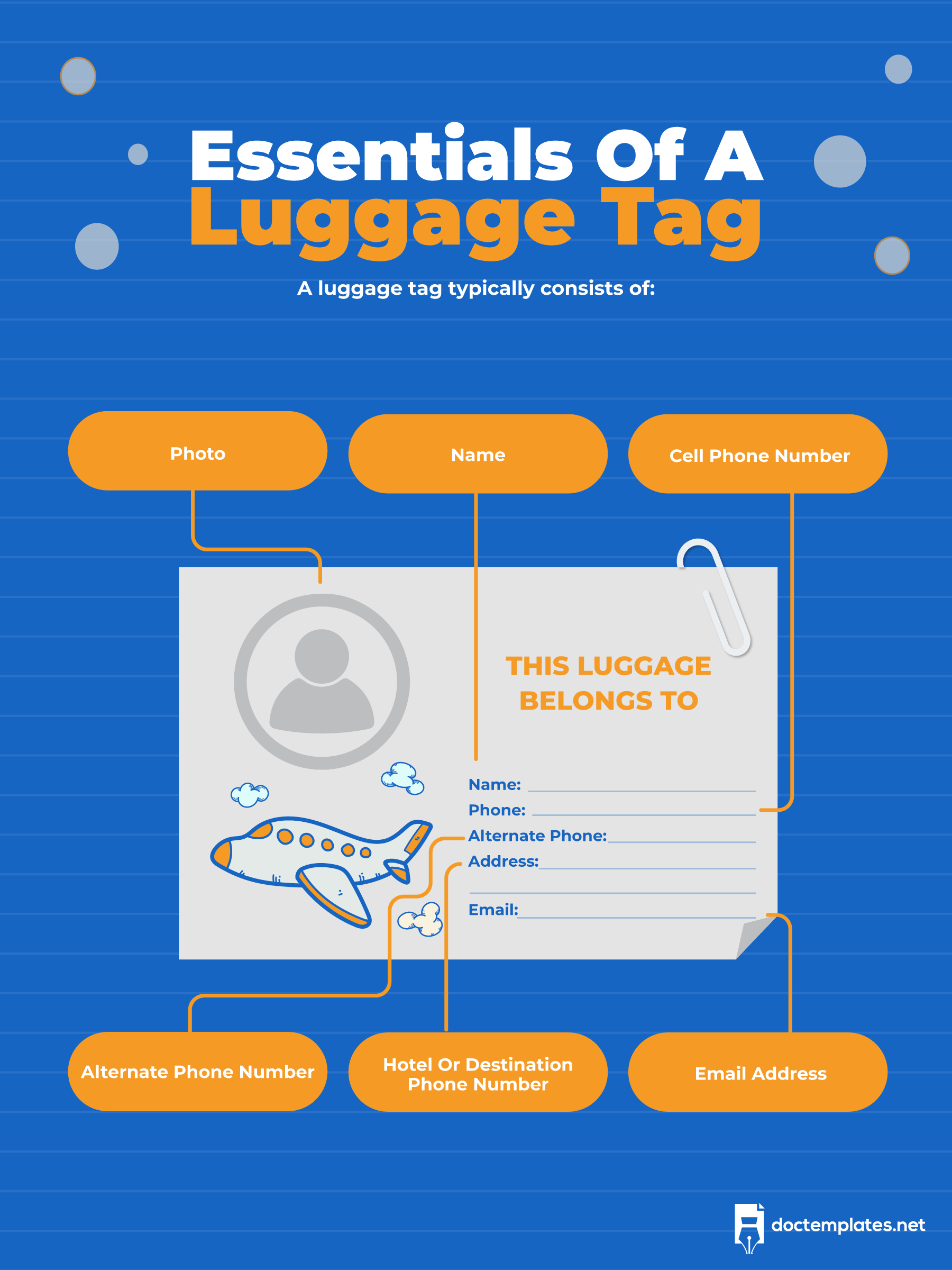
Suggestions To Consider
Luggage tags are essential to any traveler. That being the case, several things must be considered when using them to ensure the efficiency and safety of the luggage and its owner.
Some things to be considered include the following:
Pick the correct luggage tag
A tag should be as functional as it is aesthetic. It should stand out among others at a carousel and be strong enough to withstand the luggage handling process.
One should decide on the design they want, suitable material, and features-based luggage tags. A proper tag guarantees the safety of your luggage.
Do not include home address and telephone number
Many travelers include their home addresses and telephone numbers on their tags to direct their carriers where to send luggage if they are lost during transit. However, carriers and authorities caution travelers against including their home addresses and phone numbers on their luggage tags. This information may fall prey to thieves, and you risk being robbed while away.
Place a second tag inside the bag
Sometimes, a duplicate tag is placed inside the bag or suitcase in case the one outside gets damaged. However, tags risk being damaged because of rough baggage handlers, mechanical carousels, and other luggage.
Remove airline stickers
Baggage handlers must contend with hundreds of bags and suitcases daily from different airlines. Many airline stickers on a suitcase or bag make it significantly more challenging for the handlers to find the airline sticker to be placed in a specific carousel. As a result, the chances of luggage getting lost increase tremendously. Place only one sticker of the airline you are flying with.
Avoid sharing your nationality when traveling internationally
There is bound to be animosity towards citizens of specific nations mainly due to political reasons. When traveling internationally, you are discouraged from attaching stickers of your country’s flag since doing so may make you a potential target.
Double-check the airport tag
Before checking in your luggage, you should double-check to ascertain that the information you have provided is accurate and corresponds to your ticket and boarding pass. This will eliminate the risk of your bags or suitcases being lost or routed to a different airport.
Remove old tags from the bag
Before checking in, you should strip off old luggage and bag tags from your suitcases. Baggage handlers use barcode scanners to keep track of bags and their destination. Old tags may lead to staff scanning the wrong one and result in your luggage being routed to a different destination.
Important: When lost luggage remains unclaimed at an airport for three months, airlines can sell it off to auction houses after compensating the owner. Airports do this to put the luggage to good use rather than being disposed of and creating an environmental catastrophe.
Frequently Asked Questions
Who invented luggage tags?
John Michael Lyons of Moncton, New Brunswick, came up with the concept of baggage tags scribbling each passenger’s name, departure point, and destination on a separate label in the early days of train travel.
Where should you put luggage tags?
The tag should be affixed to the grip of your suitcase’s retractable handle or a bag’s string. You should ensure it is secure to avoid getting caught on the carousel conveyor.
Should you use luggage tags?
You are encouraged to use tags whenever you are traveling. They make it easier for your carrier to identify your bags, prevent theft, and make it easy for your carrier to trace you in the event they are lost.
Can you use metal luggage tags?
A chronic challenge for regular travelers using paper and plastic baggage tags is that they become raggedy, ripped, or torn off, especially on extended trips. You can choose to use metal tags that are stronger and long-lasting. Many start-up companies sell metal luggage tags that are laser engraved with the owner’s information and reusable on subsequent trips.
Are electronic luggage tags with barcodes allowed?
Yes. Barcodes enable you to check in and securely tag bags away from the terminal, completing the digital transformation of the check-in procedure. Electronic check-in eliminates long queues, therefore enhancing efficiency and passenger turnover.
Can you purchase luggage tags at the airport?
No. You could find free luggage tags at the airport check-in counter if you forgot to attach one before checking in. However, you are encouraged to have yours that best suit your needs.


